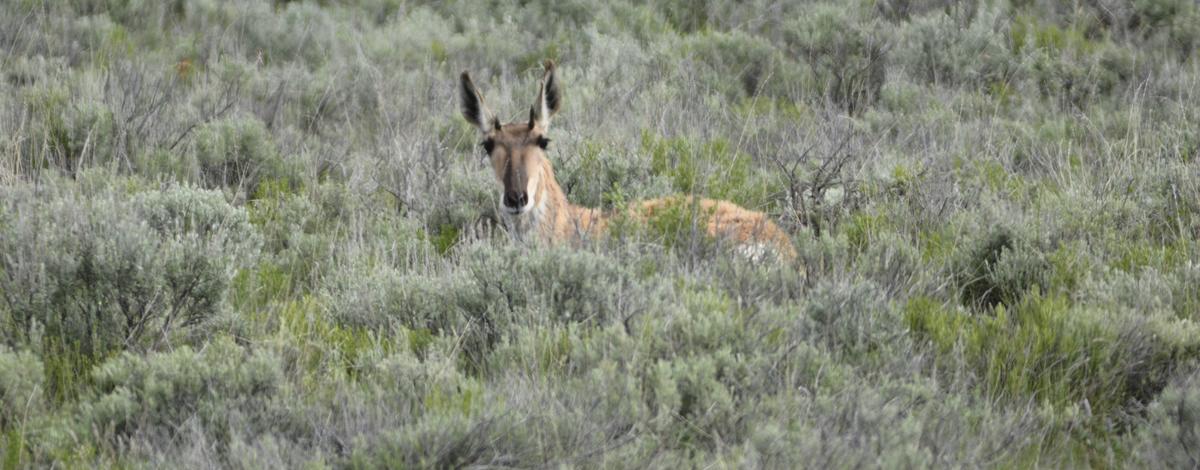A herd of pronghorn antelope that took up residence in Payette, Idaho just after the new year will be allowed to remain. Fish and Game staff have determined that leaving the animals alone – at least for the time being – is the best course of action.
“We’ve received a number of calls from citizens concerned about the pronghorn, asking us to trap and move the animals to more suitable habitat,” Fish and Game wildlife manager Regan Berkley said. “We are equally concerned, but after weighing options, have determined that any effort to trap and move the animals might do more harm than good.”
A herd of approximately 180 pronghorn left Oregon in mid-January, crossing the then-frozen Snake River to the Idaho side. The large herd split into smaller groups, and just days later, one group of 50 animals died after consuming Japanese yew, a highly toxic ornamental shrub.
The remaining two groups of pronghorn now reside in very different areas within Payette. One group of about 75 animals remains closely tied to Kiwanis Park, east of the Payette River, while the other group of close to 50 animals apparently crossed the 6th Avenue Bridge and is roaming mixed agricultural lands on the west side of the river.
Risky Business
Pronghorn, by their very nature, are high-strung. Even the most successful capture effort of animals in good condition results in 20 to 25 percent mortality due to stress and capture-related injuries. “These animals have had a tough winter and remain in a weakened state,” Fish and Game wildlife veterinarian Mark Drew said. “When you add to that a high rate of pregnancy among the does in the herd, the reasonable solution is to leave the animals alone.”
“If we do ultimately decide to trap and move these pronghorn, we can expect mortality rates higher than 25 percent,” Drew noted grimly. “Everyone needs to be ready for that.”
“It’s a bad situation that we don’t want to make worse,” Berkley added. “When the body condition of these pronghorn improves, we will certainly take another look at available options.”
- IDFG -

